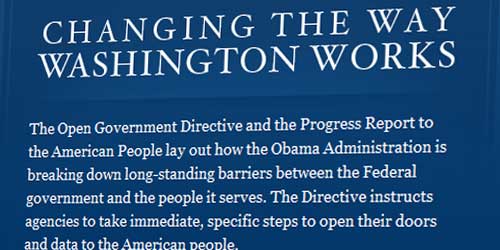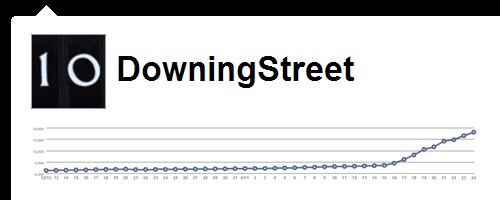
The Obama administration’s long-awaited Open Government Directive was published on Tuesday – curiously, in PDF, TXT, DOC and Slideshare, but not HTML? – and seems to have received a warm welcome across the Atlantic.
What’s quite interesting is its very prescriptive approach. Within a specified number of days, specifically 45, they must have identified and published three new ‘high quality’ datasets in open formats. Then, by day 60 (ie 6 February 2010), each department must have created a new page on its website on open government issues, at a specified URL: http://www.[agency].gov/open. This page must include mechanisms for public feedback and quality assessment; a plan for ‘how it will improve transparency and integrate public participation and collaboration’, to be updated every two years; the annual FOI report; and regular responses to public input. (I’m almost surprised they haven’t offered a wireframe for the page.)
The document goes on to outline what it expects to see in each departmental openness plan, including of particular interest:
- proposed changes to internal management and administrative policies to improve participation
- proposals for new feedback mechanisms, including innovative tools and practices that create new and easier methods for public engagement
- proposals to use technology platforms to improve collaboration among people within and outside your agency
- innovative methods, such as prizes and competitions, to obtain ideas from and to increase collaboration with those in the private sector, non-profit, and academic communities; and
- at least one specific, new transparency, participation, or collaboration initiative that your agency is currently implementing (or that will be implemented before the next update of the Open Government Plan).
Very specific measures, milestones and expectations – plus mandatory innovation across the board. Would it work here?
For more, read TechPresident.com’s analysis of the directive, and its implications.
